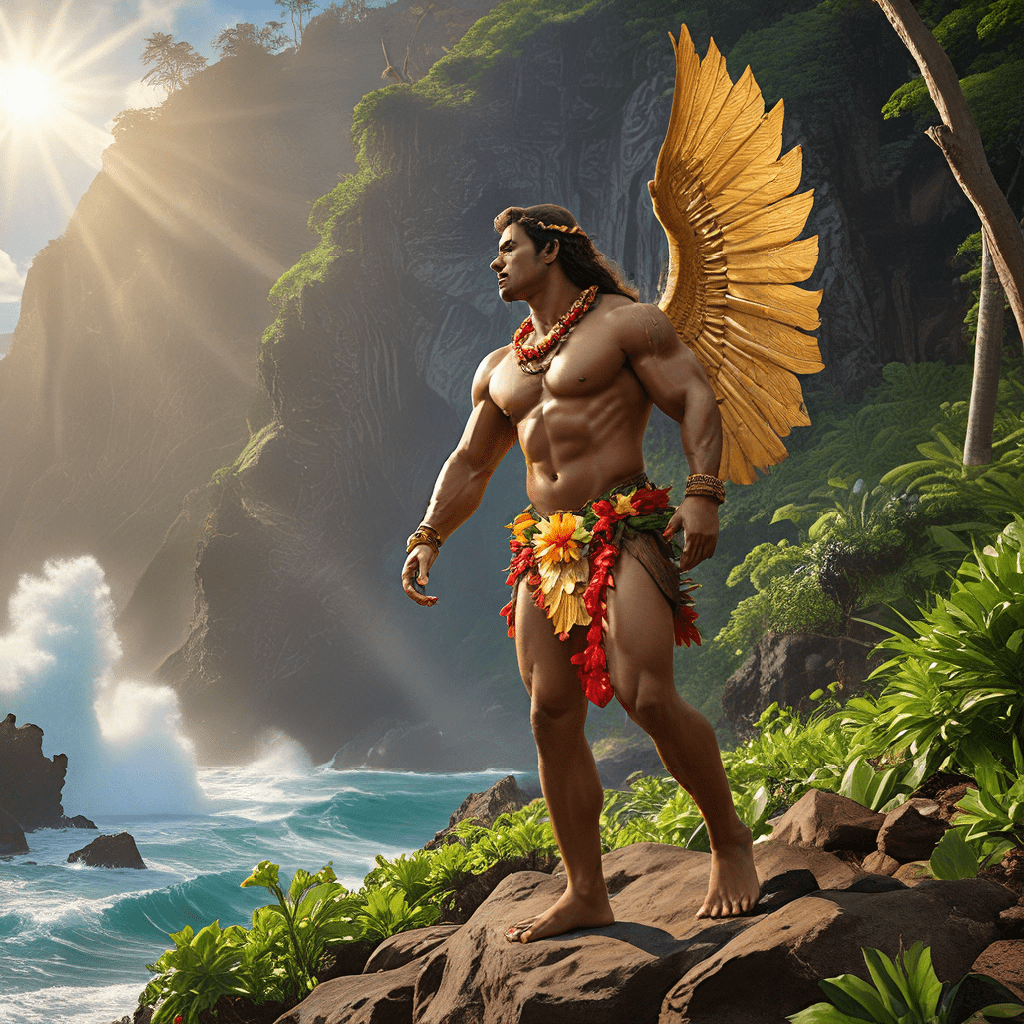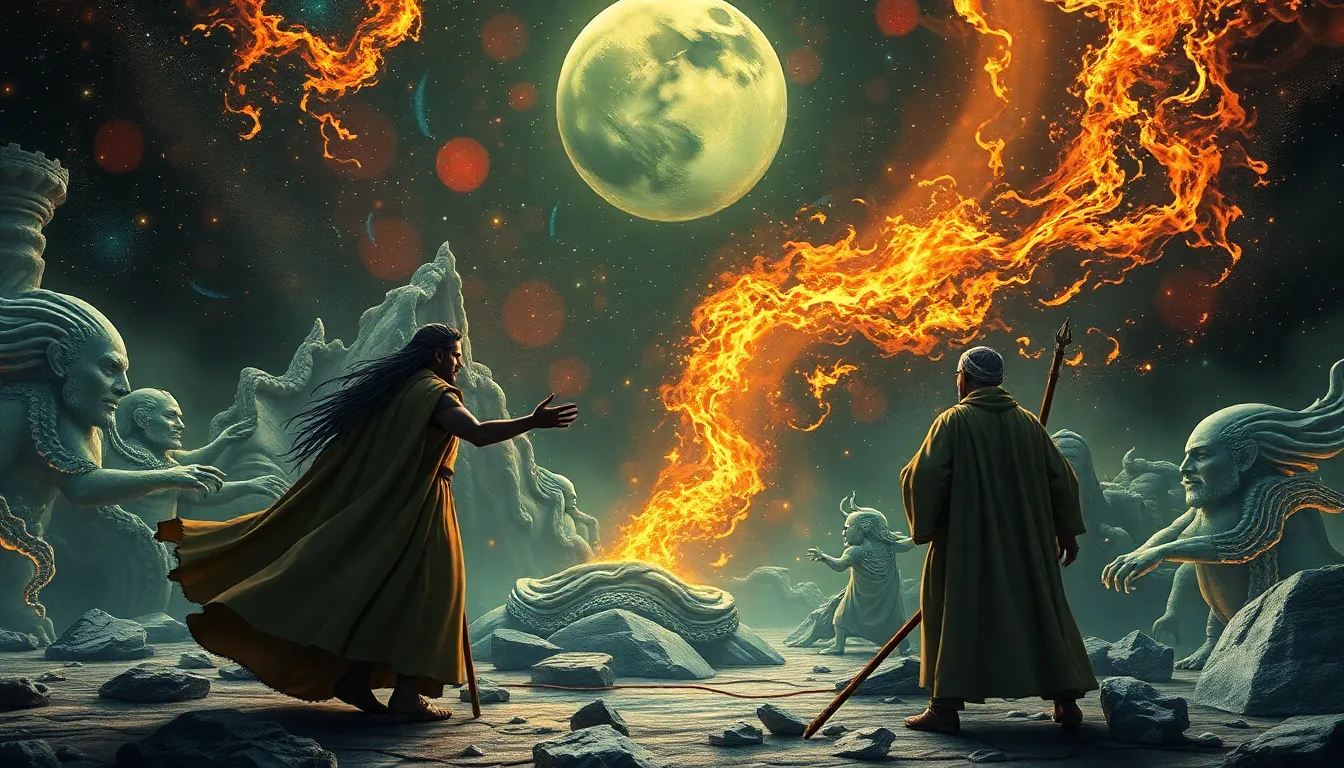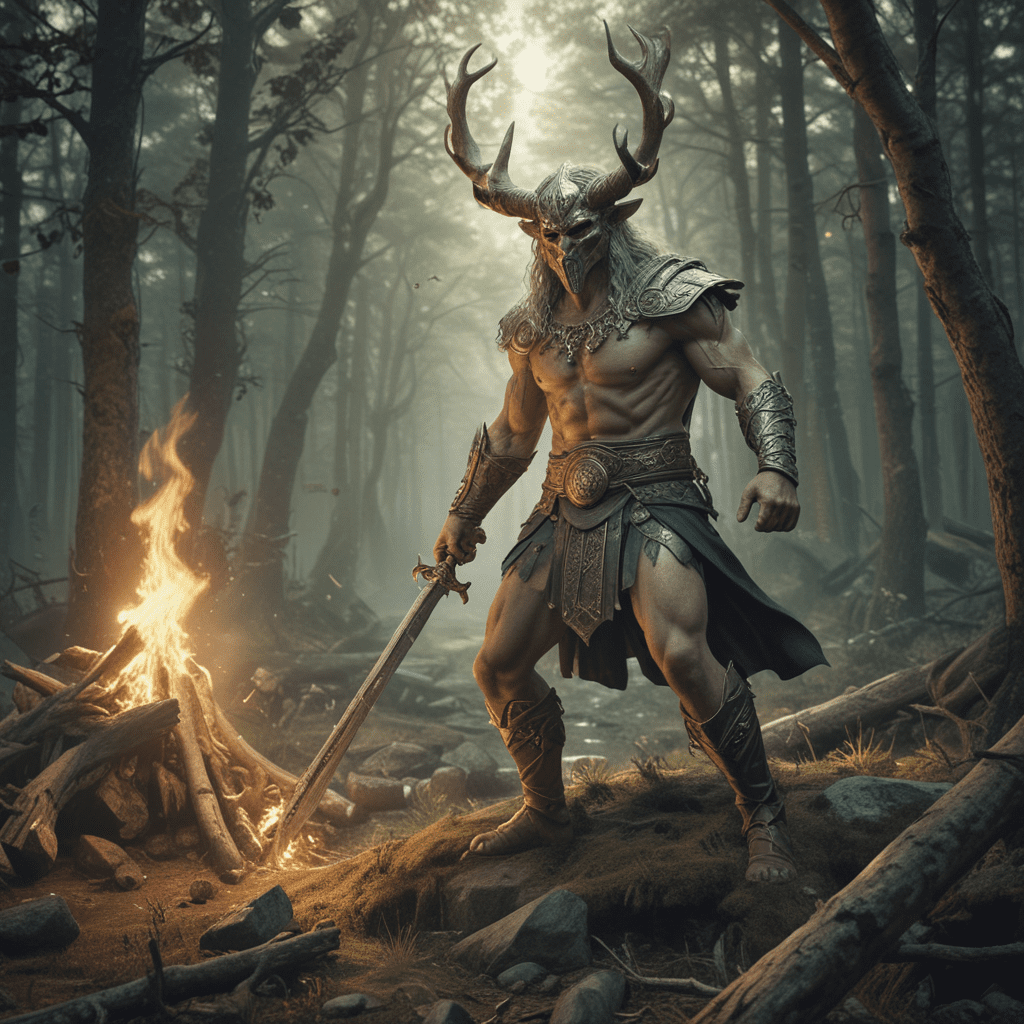Hawaiian Creation Myths: The Stories That Shaped an Island Paradise
The Birth of the Hawaiian Islands: A Tale of Creation
In the heart of the Pacific Ocean, a vibrant tapestry of islands emerges from the depths, each one a testament to the power of ancient creation myths. The islands of Hawaiʻi, a paradise renowned for its lush landscapes and captivating culture, are woven into the fabric of Polynesian mythology. These creation stories offer a glimpse into the beliefs and values of the Hawaiian people, revealing their deep connection to the natural world and their reverence for the divine. The Hawaiian creation myth, like many others around the world, speaks of a time before time, when the universe was newborn and the gods were crafting the world we know.
The Role of the Gods in Hawaiian Mythology
Hawaiian mythology is a rich tapestry of gods, goddesses, and mythical beings, each with their own unique roles and powers. These divine figures are not distant deities, removed from the human experience. Instead, they are deeply intertwined with the natural world, their actions shaping the landscape, influencing the weather, and even impacting the lives of humans. The concept of mana, a powerful life force, permeates Hawaiian mythology, giving these deities the ability to influence and transform the world around them. From the sky father Wākea to the volcano goddess Pele, these gods are the architects, the creators, and the guardians of the Hawaiian islands.
The Creation of the Earth from the Cosmic Ocean
The Hawaiian creation myth begins with a vast, primordial ocean, a boundless expanse of water and darkness. This ocean, known as "Keahiaka," was filled with the potential for life, a cosmic womb waiting to be awakened. From this watery abyss arose the first deities, embodying the very essence of creation. One of the most important figures in this creation story is Wākea, the sky father. He emerged from the depths, symbolizing the separation of the heavens from the earth, creating the foundational structure of the universe.
The Birth of the First People from the Earth
As the earth took shape, Wākea became the father of the first people, embodying the divine spark that ignited humanity. His partner, Hoʻohāhana, a goddess who personified the earth, gave birth to a race of people who were deeply connected to the land. These early humans were guardians of the natural world, respecting the balance of nature and living in harmony with their environment. This deep connection between the gods and humans is a central theme in Hawaiian mythology, reflecting the belief that humanity is a part of the divine order, not separate from it.
The Importance of the Sky Father, Wākea
Wākea, the sky father, plays a pivotal role in the Hawaiian creation myths. He represents the source of all life, the divine architect who brought order to the chaos of the primordial ocean. He is the father of many deities, including the sun, the moon, and the stars, and he is also credited with creating the first humans. Wākea symbolizes the power of the sky, the heavens, and the cosmic forces that shape our world. His name itself signifies "clear sky," reflecting the importance of the heavens in Hawaiian culture. Wākea's role as the sky father reinforces the connection between the divine and the natural world, highlighting the interconnectedness of all things.
The Creation of the Sun, Moon, and Stars
In the Hawaiian creation myth, the celestial bodies – the sun, moon, and stars – were not merely objects in the sky but rather divine beings, imbued with immense power and significance. Wākea, the sky father, played a crucial role in their creation. He created the sun, known as "Lā," from a glowing orb of fire, bringing light and warmth to the world. The moon, "Mahina," was born from a pearl-like object, symbolizing the cool, reflective nature of the night. The stars, countless twinkling specks in the vast expanse of the sky, were created from the tears of a goddess, representing hope, guidance, and the enduring presence of the divine. These celestial bodies were not merely objects in the sky, but were seen as powerful forces that impacted human life, influencing harvests, weather patterns, and even the tides.
The Origins of the Hawaiian Islands: Volcanic Activity and Divine Power
The Hawaiian islands themselves are a testament to the power of the gods. They are believed to have emerged from the depths of the ocean, the result of volcanic activity fueled by the divine. The islands were not simply formed by natural processes; they were shaped by the divine will of the gods. The Hawaiian creation story explains that the islands were created by the goddess of fire, Pele, who descended from the heavens, landing on the volcanic islands and using her power to manipulate the molten rock beneath the surface. Pele's presence is felt to this day in the volcanic landscapes of the Hawaiian islands, a constant reminder of the power and energy that surged from the earth to create this unique paradise.
The Significance of the Volcano Goddess, Pele
Pele, the volcano goddess, occupies a central place in Hawaiian mythology, representing the power of fire, the earth, and volcanic activity. She is a powerful, fiery, and fickle force, associated with both creation and destruction. Pele is often depicted as a beautiful yet dangerous woman, capable of both immense love and terrible wrath. Her home is believed to be in the crater of Kilauea, one of the most active volcanoes on Earth. Pele is a symbol of the raw power of nature, the untamed forces that shape the landscape and leave their mark on the world. The Hawaiian people have a deep respect for Pele, understanding her power and seeking her favor through offerings and prayers. Stories of Pele's wrath are passed down through generations, reminding people of the need to live in harmony with the natural world and to respect the forces that shape their lives.
The Importance of the Sea and the Ocean God, Kāna
The ocean, a vast and mysterious realm, plays a vital role in Hawaiian mythology. It is not merely a body of water but a living entity, imbued with spirit and power. The ocean god, Kāna, embodies the essence of the sea, its vastness, its power, and its mystery. He controls the tides, the currents, and the creatures that live within the depths. Kāna's power is respected by the Hawaiian people, as they rely on the ocean for sustenance, transportation, and cultural connections. The sea is a source of life, but it can also be a source of danger, reminding people of the need for respect and caution. The ocean, like the land, is viewed as a sacred place, deserving of reverence and protection. The stories of Kāna and the sea serve as reminders of the interconnectedness of life, the delicate balance of nature, and the importance of respecting the forces that shape our world.
The Role of the Gods in Hawaiian Culture and Tradition
The Hawaiian creation myths, with their stories of powerful gods and goddesses, have shaped Hawaiian culture and tradition in profound ways. They provide a framework for understanding the natural world, the origin of life, and the connection between humanity and the divine. These stories are not simply tales for entertainment but rather living narratives that guide the way the Hawaiian people live their lives. They inform their values, their beliefs, and their relationship with the natural world, emphasizing the importance of respect, harmony, and balance. The gods and goddesses of Hawaiian mythology are not distant deities, but powerful forces that continue to shape life on the islands, reminding people of the interconnectedness of all things and the need to live in harmony with the natural world.
FAQ
1. What are some key beliefs in Hawaiian mythology?
Key beliefs include the importance of mana (life force), the interconnectedness of all things, the power of the gods, and the need to live in harmony with nature.
2. Who are some important figures in Hawaiian mythology?
Significant figures include Wākea (sky father), Hoʻohāhana (earth goddess), Pele (volcano goddess), and Kāna (ocean god).
3. How did the Hawaiian Islands form according to the creation myth?
The Hawaiian islands are believed to have been created by Pele, the volcano goddess, who used her power to manipulate molten rock and shape the landscape.
4. What is the role of the ocean in Hawaiian mythology?
The ocean is seen as a powerful and sacred entity, controlled by the ocean god Kāna. It is a source of life, transportation, and cultural connections.
5. How do the creation myths impact Hawaiian culture today?
The creation myths continue to influence Hawaiian values, beliefs, and relationships with the natural world, emphasizing respect, harmony, and balance.



